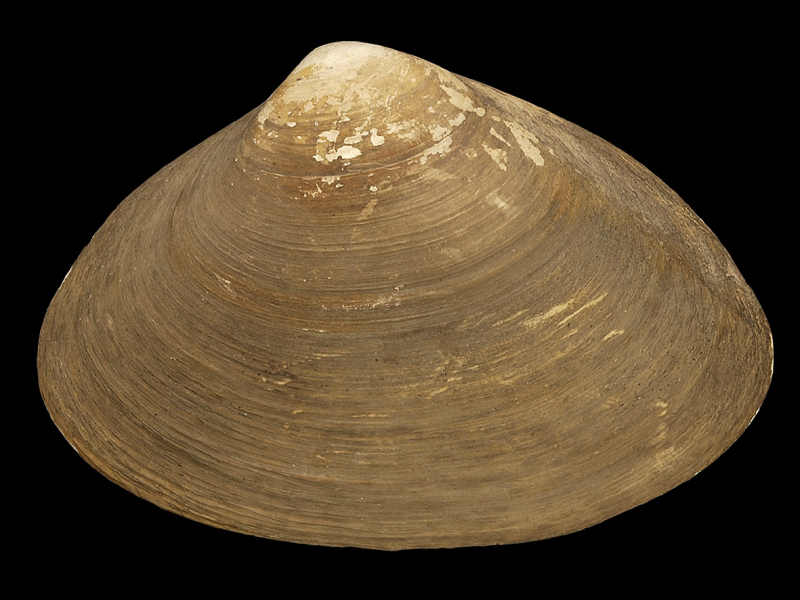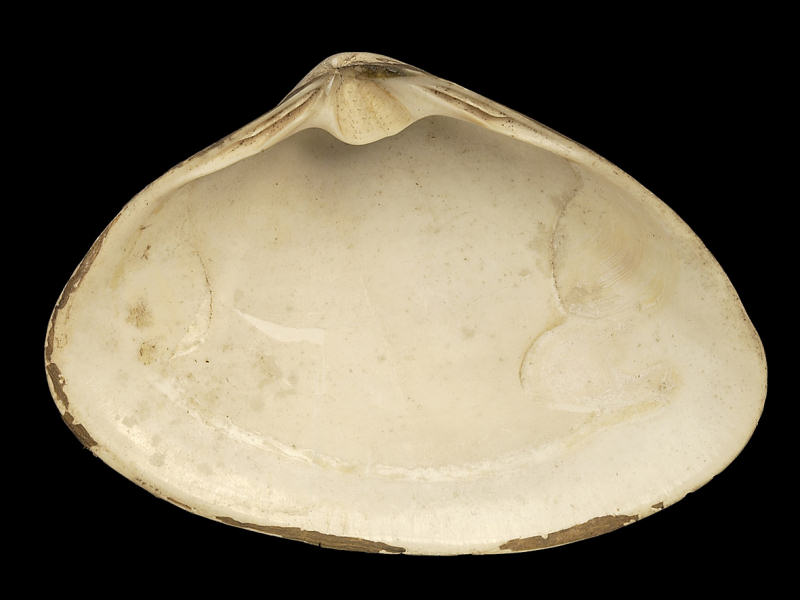Atlantic surf clam (Spisula solidissima)
Distribution data supplied by the Ocean Biodiversity Information System (OBIS). To interrogate UK data visit the NBN Atlas.Map Help
| Researched by | Michelle Carter | Refereed by | Admin |
| Authority | (Dillwyn, 1817) | ||
| Other common names | - | Synonyms | - |
Summary
Description
Recorded distribution in Britain and Ireland
Spisula solidissima is imported for food into Britain and Ireland but is not cultivated and does not occur in the wild in Britain. This species is native to America.Global distribution
Common around the shores of America and Nova Scotia, Canada.Habitat
Adults tend to burrow in medium to coarse sand or gravel substrata but are also found in silty to fine sand. This species does not tend to burrow in mud. Found at depths ranging from 8 to 66 m.Depth range
-Identifying features
- The shell is yellowish white in colour.
- The periostracum is thin and yellowish- brown in colour.
- The shell has small irregular radiating ridges.
- It can grow up to 22 cm in length.
- Oval in shape overall.
Additional information
The subspecies Spisula solidissima simulis is more elongate than the surf clam with a flatter anterior slope. Surf calms tend to leap out of the sediment when disturbed. In dense beds, the clams compete for space, therefore, localized physical stimulation of the mantle edge from contiguous clams can produce shell regeneration. Subsequently, overall irregularity in shell growth and shape is evident amongst individuals growing in surf clam beds. Spisula solidissima beds occur in even aggregations, localised or patchy dense beds. Prefers areas of turbulent water in water temperatures less than 25C.Listed by
- none -
Bibliography
Abbott, R.T. 1954. American seashells. New York: D-Van Nostrand Company Inc.
Abbott, R.T., 1974. American seashells: the marine mollusca of the Atlantic and Pacific coast of North America, 2nd edn. New York: Van Nostrand.
Cagnelli, L.M., Griesbach, S.J., Packer, D.B. & Weissberger, E. 1999. Essential fish habitat source document: Spisula solidissima, life history & habitat characteristics. NOAA Technical Memorandum NMFS-NE, 142.
Fay, C.W., Neves, R.J. & Pardue, G.B. 1983. Species profiles: Life histories and environmental requirements of coastal fishes and invertebrates (Mid-Atlantic) Surf Calm. U.S. Fish and wildlife Service, Division of Biological Services, FWS/OBS-82/11.13. U.S Army Corps of Engineers, TR EL-82-4., http://www.nwrc.gov/publications/specintro.htm
Datasets
NBN (National Biodiversity Network) Atlas. Available from: https://www.nbnatlas.org.
OBIS (Ocean Biodiversity Information System), 2025. Global map of species distribution using gridded data. Available from: Ocean Biogeographic Information System. www.iobis.org. Accessed: 2025-08-10
Citation
This review can be cited as:
Last Updated: 17/10/2005




